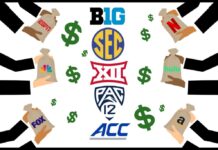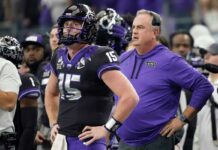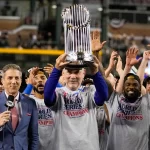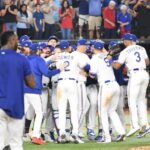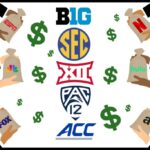
We do a lot of arguing about sports among us, but there is one thing, on which, I’m pretty sure, we can all agree. There’s nothing more awful than NFL exhibition football. NFL teams regard it as joke, barely playing their players thus just hoping they’ll be ready to play for real on Opening Day. NFL fans are left holding the bag, either through their forced buying of these tickets, or by sitting at home watching some of these games on TV wondering “Who IS that guy?”
But I will give the NFL credit for something in this exhibition season. They have decided to use the games as laboratories for potential rules changes or reaffirmation. Two, in particular have received a lot of attention. The no-contact rule after five yards, and the extra point moved back from the two-yard line to the 15.
 Let’s visit the no-contact rule first. This is in direct response to the Super Bowl champion Seahawks’ big physical defense that mauled its way a title last year. It’s already really hard for NFL defenses to stop offenses; the Seahawks basically took the tact that they would provide as much contact as possible and dare the officials to throw flags. It worked to perfection because there was no way officials were going to throw flags on every play. Well, in this exhibition season, officials have been throwing the flag at such a rate that you’d think grass is yellow rather than green. Just last week, the 16 games averaged nearly 21 accepted penalties per game. In week 17 of the 2013 season, there were an average of 10 accepted penalties per game.
Let’s visit the no-contact rule first. This is in direct response to the Super Bowl champion Seahawks’ big physical defense that mauled its way a title last year. It’s already really hard for NFL defenses to stop offenses; the Seahawks basically took the tact that they would provide as much contact as possible and dare the officials to throw flags. It worked to perfection because there was no way officials were going to throw flags on every play. Well, in this exhibition season, officials have been throwing the flag at such a rate that you’d think grass is yellow rather than green. Just last week, the 16 games averaged nearly 21 accepted penalties per game. In week 17 of the 2013 season, there were an average of 10 accepted penalties per game.
The NFL says they are committed to enforcing the rule to the letter of the law, but they need to be careful here. More flags mean longer games. The NFL has worked really hard to try to keep games in a three-hour window, and while they are convinced that offense sells, and defenses should be more akin to the Washington Generals vs the Globetrotters. Do you really want NFL football to look like Arena Football, which is what the NFL is rapidly turning into? I’m not sure why the NFL looks down on teams like Seattle and San Francisco, who have shown that balance through the team is the key to winning championships. This looks a lot like when the NBA put in its “No hand-checking” policy back in the mid 90’s. The NBA was looking for more freedom of movement. That decision helped raise scoring and returned a balance to the game. Where the NFL has it wrong is that offenses already have the benefit of the doubt. Scoring is at an all-time high. It’s the defenses, not the offenses, that need the help.
As for the extra points moved back: I really do like this idea. NFL kickers are so proficient. A year ago they missed only five PAT’s all season. So far this preseason there have been eight misses. No one wants to see automatic, and if indeed a missed PAT is the difference between winning and losing, what’s wrong with that? Some have said that the goal posts should be narrowed, or that the ball should be moved forward to the one-yard line rather than backward to make teams think even more about going for a two point conversion. Skinny, Arena Football-like goalposts seem so gimmicky. And moving the ball to the one, I’m not convinced, would change the mindset of coaches who would (and should) take the one point rather than gambling early and then trying to chase the missed point way before they need to. But there does need to be a bigger challenge for the kickers, who may be better at their job, than anyone else is in theirs. This pre season has shown that the extra point need not be the cue for a beer run to the fridge. When the NFL Competition Committee meets in march to talk again, this is a rule that they need to pass.




